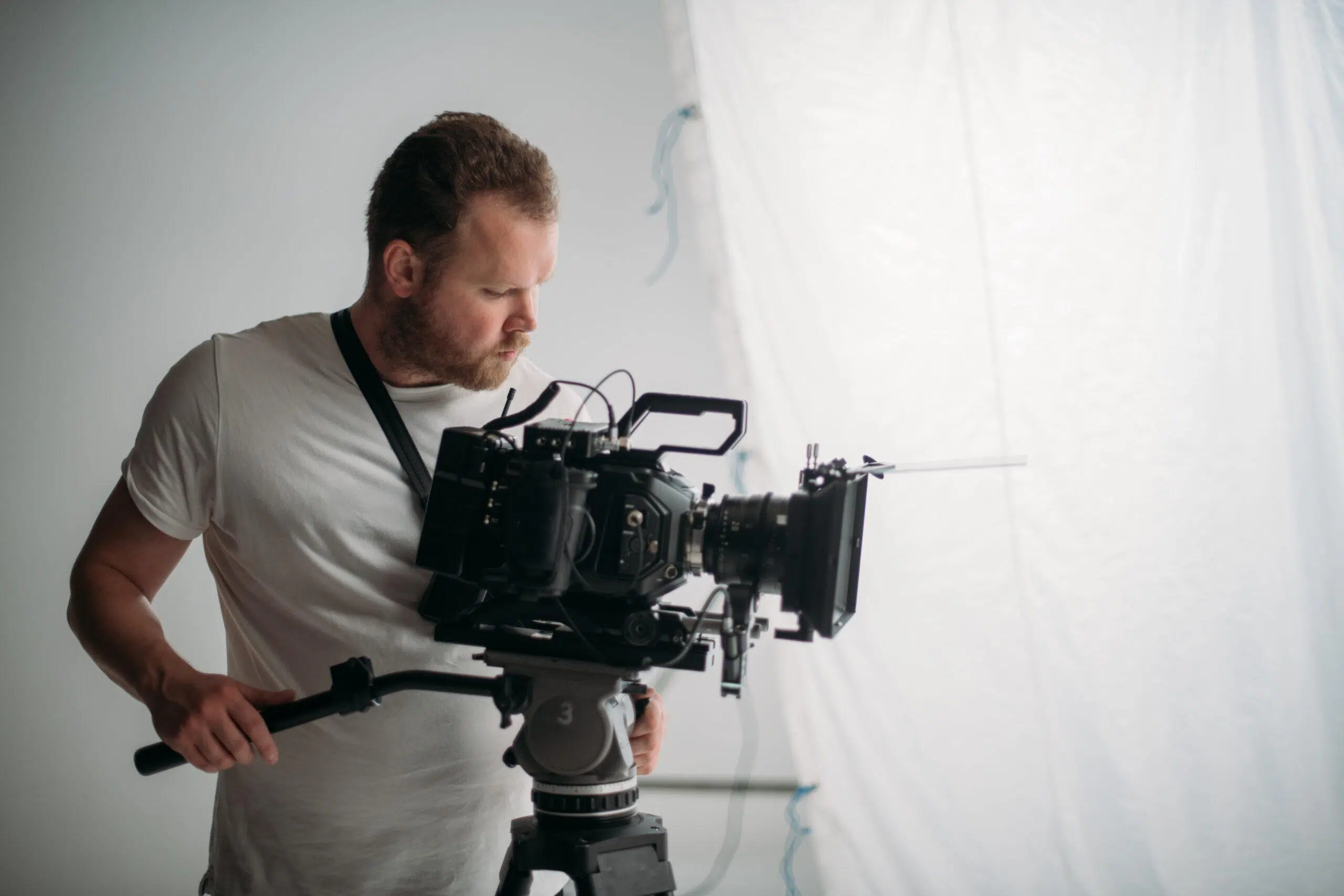Here’s why 24 FPS is good for movies but bad for gaming:
Movies stick to 24 FPS (which actually plays back at 48 FPS) because it’s what viewers expect.
Faster frame rates look more like news or sports in appearance, and it tends to disrupt the movie experience.
Meanwhile, when playing games, higher frame rates provide more information and better response times to the player.
So if you want to learn all about why video games don’t look as good as movies at 24 FPS, then you’re in the right place.
Keep reading!

What Does FPS Mean?

Let’s start at the beginning.
What does FPS even mean?
How could we even gauge what it means to have a good FPS?
For starters, these letters stand for something, and that something is “frames per second.”
FPS is a way to measure video recordings and playback.
If you remember, a video is made by taking a bunch of pictures and then playing them fast enough that your brain can’t identify the individual pictures.
It just looks like a continuous stream of motion.
A “frame” is a single picture in that process.
So, the FPS number is telling you how quickly pictures are being taken, or, conversely, how quickly frames are rushing past your eyesight.
I’ll get into distinctions for recordings and playback and why they matter in a later section.
For now, it’s enough to know that the FPS number is basically telling you how many pictures are stuffed into a single second of a recording.
That’s something we can analyze and compare to come up with some values that might be better or worse for various applications.
What Is a Good FPS for Movies? (2 Things)

Now that you know a little more, let’s talk about what makes for a “good” FPS.
Is there a magic number that makes for perfect movies?
Actually, no.
Instead, there are industry standards that are centered around a few different numbers.
We’ll talk about those numbers and why they were chosen in a bit.
Before that, we need to really qualify the idea of a good FPS rate.
For the most part, there are three considerations when picking an FPS rate.
First, you want a rate that appears smooth and natural.
If your rate is too slow, the movie doesn’t look like a movie anymore.
You can think about this with old-fashioned flip books (you know, actual books where you flip the pages really fast to make it look like animation).
If you flip the book fast enough, it looks like it’s in motion, and that’s pretty cool.
If you turn the pages, one at a time, and look at each picture for a full minute, then it doesn’t look like things are in motion.
By the way, 1 frame per minute would come out to 1/60 of a frame every second.
That’s super slow.
In general, things start to really look like motion around 24 FPS.
That means that anything less than 24 FPS is going to just look like you’re flashing still pictures for a bit before going on to the next one.
It will lose the quality that makes it feel like actual motion.
On the other hand, if you have too many frames, then things start to look unnatural.
There’s a pretty intense debate in science about how many FPS the human eye sees (it’s not really the best way to measure vision), but there comes a point where you can have so many frames in a second that the playback actually has more detail than people can see naturally.
When this happens, a movie looks unnatural, and that can be distracting.
While there’s a lot of debate over these numbers, most people agree that, at the very least, you get negative viewing effects when playback exceeds 500 FPS.
So, the ideal rate for a movie is probably somewhere between 24 and 500 FPS.
There are a lot of other things to consider with FPS, so let’s get into that, starting with the differences between recording rates and playback rates.
#1 Recording vs Playback

This is probably the most important thing you will read in this article.
The FPS rate that is used to record a video does not have to match the playback rate.
When you are recording, FPS is telling you how many individual pictures are taken each second by the camera.
This limits how much visual information exists in the recording.
If your camera operates at 1 FPS, that’s not enough data to create motion-looking playback.
At best, it would look like old stop-motion film.
If you have 1 million FPS, then that’s so much information that you would need to cut frames to play it back in a way that makes sense to viewers.
The playback FPS is telling you how many frames the player is showing you each second.
This is influenced by how many frames are available, but it’s a little more complicated.
Consider a really common example: slow motion.
To create a slow motion sequence, film crews ramp up the FPS for recording.
Let’s say that they jump up to 300 FPS to shoot a slow motion scene.
That means that for playback, the maximum speed that would make sense is 300 FPS.
If the player ran at 300 FPS, then 1 second of footage would take 1 second to play.
There would be no slow motion effect.
But, what if the player only ran at 100 FPS?
In that case, it would take 3 seconds of playback to cover 1 second of footage.
You have 300 frames to get through, so the player can’t keep up with the real-time recording.
This is why things will appear to move at ⅓ speed when you watch the film.
This is how slow motion works.
There are too many frames to play at a rate that looks like real time.
You can go in the other direction too.
If your player is running through frames faster than they were recorded, it will effectively speed up the scene.
Both techniques are used in film making for various reasons.
The point to take away from all of this is that there is freedom in both how many frames are recorded and how they are played back, and those numbers often don’t line up.
#2 A Brief History of Movie Formats

With all of that in mind, we can briefly go through some significant FPS numbers that show up in movies.
When movies first became a thing, people used hand-crank cameras to make recordings.
Because of this, the FPS rates could change depending on how fast the crank was turned.
In general, movies were recorded somewhere between 16 and 24 FPS.
Film makers would actually change the FPS rates to try to convey different feelings.
A faster FPS made for smoother video, which could create somber effects.
Meanwhile, slapstick comedy could be accentuated with the choppier playback from a slower FPS recording.
When it became possible to record sound with the movie, things changed.
You couldn’t do variable recording speeds because it would mess with the sound.
So, the industry standardized around 24 FPS.
Here’s the thing.
24 FPS was the standard recording speed, but cameras of the day actually used two shutters.
So, a camera would take two pictures every cycle.
That means that 24 FPS film could actually be played back, in real time, at 48 FPS.
When it comes to viewing rates, movies started playing at around 48 FPS back in the 1930s.
Later, cameras were developed with three shutters, which allowed frame rates to get up to 72 FPS.
Since then, it has been common practice to play movies back at 60 FPS in movie theaters.
A large part of the 60 FPS standard was influenced by the NTSC (National Television System Committee).
This committee standardized television broadcast playback at 60 FPS in 1953.
Since then, it made sense for movies to adopt the 60 FPS standard too, and that has largely been the case.
Well, it’s actually more complicated than that.
What the film industry really did was adopt recording rates that could accommodate both Hollywood and NTSC standards.
They found ways to play movies back at different speeds without significantly impacting the quality.
All of this is to say that 24 FPS is not actually good for movies.
High-end movie cameras might record at 24 FPS with 3 shutters—providing an effective FPS of 72.
If the film crew wants to get into slow motion, then the FPS recording rates will be even higher.
Meanwhile, 48 FPS is the standard playback rate for movies and has been for the better part of a century.
There are movies that break this rule, but by and large, when you watch a movie at a theater, you’re watching it at 48 FPS.
Meanwhile, when you watch a movie at home, there’s a good chance that you are watching it at 60 FPS (although some modern digital players let you choose your frame rate).
What Is a Good FPS for Games?

That covers a lot about movies, but what about games?
Why don’t they run at 24 FPS (or the effective 48 display FPS)?
This really boils down to the fact that games are trying to accomplish something else.
When playing a game, the FPS rate determines how much information is displayed to your eyes.
Generally speaking, more information gives you more ability to play the game, so higher frame rates are better.
On average, a frame rate of 60 FPS is considered good (and many games cap refresh rates here to help minimize how hard they push computer hardware).
Games are often considered playable at 30 FPS, and below that is usually considered a bad frame rate.
At the same time, when getting into competitive gaming, many professionals prefer frame rates at 120 FPS or higher.
In general, the highest frame rate you can reasonably get for a game is the best.
Why Do Games Look Better at Higher FPS and Movies Don’t?

The real question here is, why don’t movies push for higher frame rates?
When you play a game, higher frame rates smooth out the motion and make for a better experience.
Why don’t we want smooth movies?
This really comes down to perception.
Movies have been displayed at 48 FPS for so long that people have grown accustomed to it.
Things like newsreels, sports broadcasts, and even home movies are recorded and displayed at higher frame rates (when possible).
In fact, watching sports at 120 FPS is considered a luxury where you can make out more of the action.
But when it comes to movies, that higher frame rate is associated with different types of video.
It feels “too real” and stops feeling like a movie.
In other words, movies stay at 48 FPS because of the ambiance and to deliver according to the expectations of the masses.

